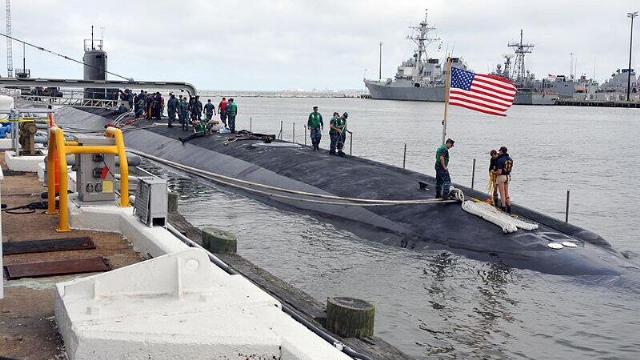The development of the Columbia submarine is too expensive for the US budget
MOSCOW, October 5 — RIA Novosti, Andrey Kotz. Apparently, the construction time of the Columbia-class strategic nuclear submarine will have to be shifted to the right. According to the U.S. Chamber of Accounts, the first submarine of the series will cost the treasury a much larger amount than planned. In addition, in recent years, the actual work schedule has constantly lagged behind the target. About the problems of the program — in the material of RIA Novosti.
Complicated and expensive
Another independent audit showed that the Navy is having a hard time restraining the rise in the cost of the project. The costs were six times higher than the estimate of the general contractor and five times higher than the Navy. The price of the first nuclear submarine, laid down on June 4, 2022, has already exceeded ten billion dollars. Columbia is quite capable of catching up with even the record-breaking 13 billion-year-old nuclear aircraft carrier Gerald Ford.
Based on the results of the audit, the supervisory authority recommended that the Navy instruct the general contractor General Dynamics Electric Boat to review costs, as well as determine whether budget funds are being allocated effectively. All this is likely to seriously slow down the project. They were going to transfer the lead boat to the fleet in 2028, however, the Accounting Chamber allows for a shift of deadlines to the right.
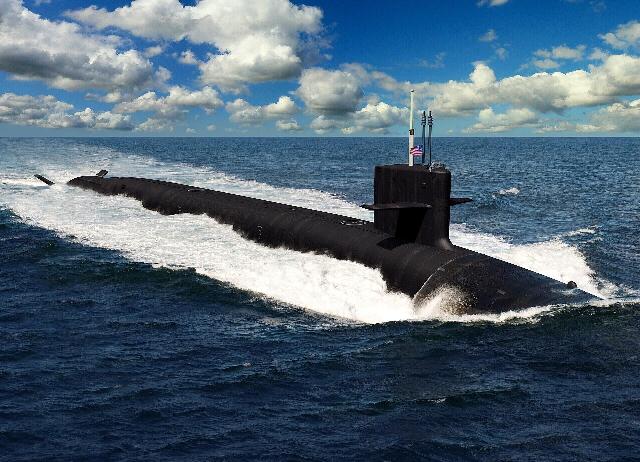
The project of the American Columbia-class nuclear submarine
Image source: © Photo : Public Domain
The previous audit was in 2018, and then the auditors were also dissatisfied with many things. The Commission pointed out that not all technical solutions can be used due to their partial or complete unavailability. In particular, there may be problems with the development of a nuclear reactor, a compartment for missile weapons, a propulsion system, an integrated energy system and an X-shaped rudder at the aft end.
The auditors questioned the operability of these systems, since prototypes had not even been created for many. Some of the stated functions generally had only a theoretical basis at that time. The Commission expressed concerns that all this would affect the cost of the program. And so it turned out.
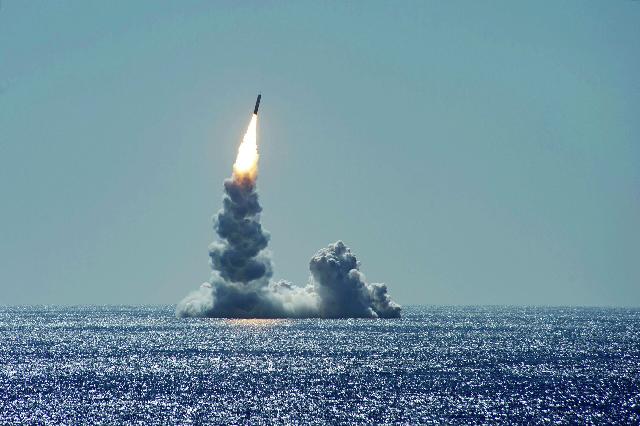
Launch of the Trident II ballistic missile (D5LE) from the submarine USS Maine
Image source: © Photo : US Navy
However, Washington will definitely not be able to abandon Columbia. Now the naval component of the American nuclear triad is supported by Ohio-class nuclear submarines. Some of them are over 40 years old, the youngest is 27. A replacement has been needed for a long time — on a modern technological basis. We planned a series of 12 pennants. Now it's questionable.
In the position of catching up
There is also a problem with the ground component. In mid-July, the Pentagon announced the delay in the development of the promising LGM-34 Sentinel intercontinental ballistic missile due to the cost significantly exceeding the estimated one.
The competition for mine-based ICBMs was announced in 2016. Two industrial giants competed — Boeing and Northrop Grumman. In 2017, they were allocated $349 and $329 million from the budget for the preliminary design, respectively. And in 2019, Northrop Grumman made a cunning move: they acquired Orbital OTK, which supplied Boeing with solid-fuel rocket engines. The aerospace Corporation lost its chances of success and dropped out of the competition.
In September, the program reached the Milestone B phase — that is, it entered the development and production stage. The cost at that time was estimated at 77.7 billion. However, Northrop Grumman did not meet this amount. They are already talking about 140.9 billion. The Pentagon fears that this is not the limit either. If you do not make changes, you will get 160 billion. And the price of one rocket will increase from the estimated 118 to 214 million.
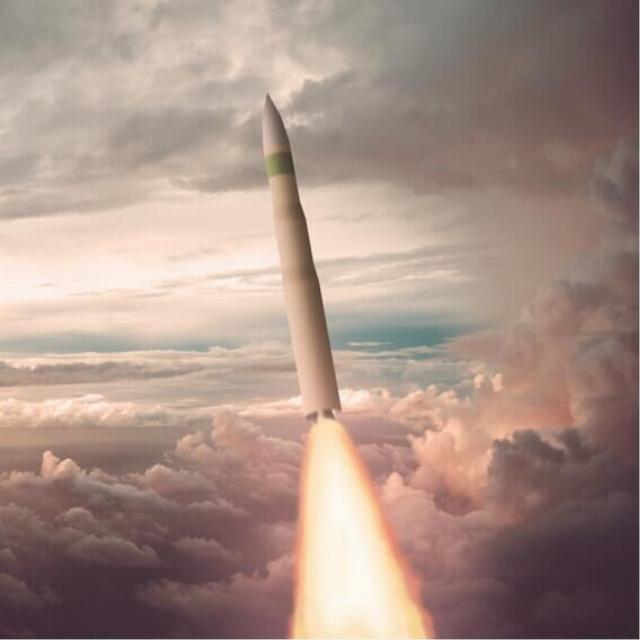
Conceptual drawing of the LGM-35A intercontinental ballistic missile of the United States Air Force
Image source: © U.S. Air Force
"There are reasons for this, but there are no excuses," said William LaPlante, Deputy Defense Minister for Procurement and Supply. — We are fully aware of the scale of the costs. And we are aware of all the risks associated with the fact that we are not modernizing our nuclear forces. We do not have cheaper alternatives that would meet the requirements of the military. I decided to cancel the transition of the program to the Milestone B stage and instructed the Air Force to restructure and refine it in order to reduce cost overruns."
Andrew Hunter, Assistant Secretary of the Air Force for Procurement, Technology and Logistics, promised to submit a plan within the next few months. The entire process of reviewing and approving the new budget and schedule by the Pentagon will probably take from one and a half to two years.
According to experts of the defense department, it is possible to save money, in particular, on missile silos — to make them smaller, simpler, with a better efficiency—cost ratio. Earlier it was reported that the Sentinel does not differ in size from the Minuteman III in service, so it will not be necessary to significantly refine the mine launchers. However, the designers came to the conclusion that new ones are needed, with a more developed infrastructure. They wanted to adopt the rocket in 2030, but most likely it will happen later.
They won't build much
The Pentagon is doing better, although not without difficulties, with the aerial component of the nuclear triad. The first B-21 Raider strategic bomber took off last year. Six more aircraft are at different stages of construction. However, there was also a rise in price. It was supposed to be 700 million for one car, it turned out to be almost a billion. That's how much the B-2 stealth bomber of the previous generation cost, a less expensive alternative to which the B-21 was conceived.
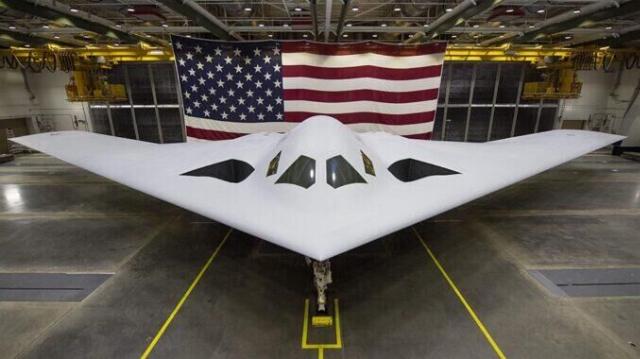
The new strategic bomber of the US Air Force B-21 Raider
Image source: © Photo : U.S. Air Force
In August, the American magazine The National Interest concluded that the Pentagon's request for 300 bombers of this type is impossible. The publication notes that B-21 aircraft are not as expensive as the development of completely new technologies, but their cost still raises doubts about the possibility of building a sufficient number of these machines. In addition, there are questions about the state of the technological base. In general, the Pentagon will receive at best 20 bombers, and this is too little.
Recall that in March, the US Department of Defense requested from Congress for 2025 about 5.3 billion dollars for the program of B-21 Raider bombers capable of carrying nuclear weapons. At the end of May, the US Air Force said: according to the test results, the B-21 is getting closer to becoming the basis for this type of combat aircraft in the fleet.
